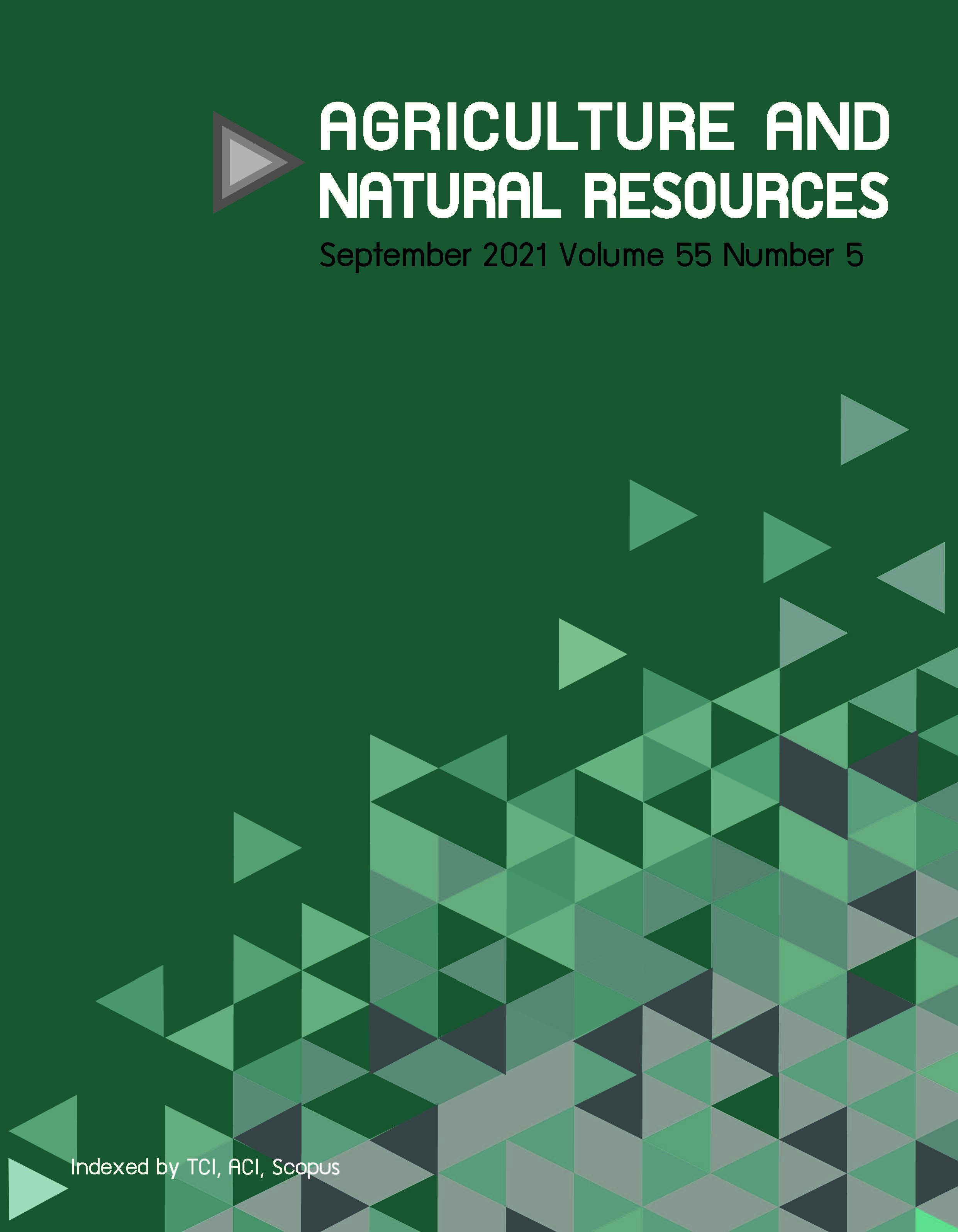Simulation for integrating bioethanol production in existing commercial agar extraction plant toward zero waste technology
Keywords:
Energy efficiency, Enzymatic hydrolysis, Gracillaria, Sustainable process, Waste valorizationAbstract
Filter cake (FC) from an agar extraction plant has potential as bioethanol production feedstock due to its abundance and not requiring pretreatment. Simulations were conducted using three modified saccharification/hydrolysis processes utilizing FC as feedstock to define the required material and energy. FC samples from two agar extraction plants were characterized. Then, the promising FC was used as feed in a laboratory-scale test in three modified saccharification scenarios. Conversion values from the laboratory test were used in simulations involving a 500 L fermentation tank to calculate the required material and energy for commercial-scale application. FC with 16.4% dry weight of cellulose was used in the simulation. The highest ethanol concentration (2.5% by volume, v) was produced using hydrolysis with prior drying, but required 1291.9 kWh/L ethanol. The main electricity consumption for the other two scenarios was only for the agitation motor in the hydrolysis process. Unseparated filter aid material (FAM) scenario produced 2.2% v ethanol but only required 244.9 kWh/L ethanol, which was the least compared to the other treatments. The unseparated FAM scenario also required the least heat for distillation (134.51 MJ/L); however, this was only 4 MJ less than for the extractive hydrolysis scenario that required the most heat. The unseparated FAM scenario was the most promising scenario for bioethanol production. Purification of carrageenan and alginate could be used to obtain ethanol. Separating the FAM before fermentation made it possible to use the glucose solution for other potential financially viable applications, such as sweeteners. This study provided prospective insight for seaweed and agar industrialists regarding the intensification or expansion of this approach for other seaweed-based chemicals.
Downloads
Published
How to Cite
Issue
Section
License
Copyright (c) 2021 Kasetsart University

This work is licensed under a Creative Commons Attribution-NonCommercial-NoDerivatives 4.0 International License.
online 2452-316X print 2468-1458/Copyright © 2022. This is an open access article under the CC BY-NC-ND license (http://creativecommons.org/licenses/by-nc-nd/4.0/),
production and hosting by Kasetsart University of Research and Development Institute on behalf of Kasetsart University.







